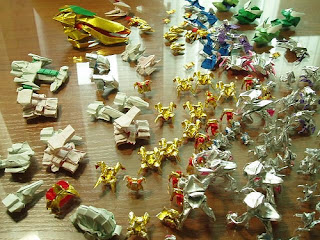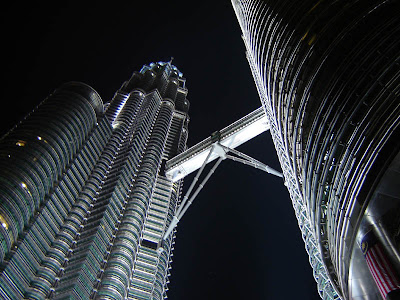 The ASUS A636 and A632 are the first Windows Mobile 5.0 Pocket PCs with integrated GPS to hit the US market. We'll take a look at the full-featured A636 which offers the SiRF Star III GPS chipset, WiFi, Bluetooth, an SD card slot, 256 meg SD card with Destinator navigation software, Destinator PN navigation and mapping software on two CDs (US, Canada, Route USA) and a brilliant QVGA display (the A632 is the same but lacks WiFi and adds a mini SD slot).
The ASUS A636 and A632 are the first Windows Mobile 5.0 Pocket PCs with integrated GPS to hit the US market. We'll take a look at the full-featured A636 which offers the SiRF Star III GPS chipset, WiFi, Bluetooth, an SD card slot, 256 meg SD card with Destinator navigation software, Destinator PN navigation and mapping software on two CDs (US, Canada, Route USA) and a brilliant QVGA display (the A632 is the same but lacks WiFi and adds a mini SD slot).
In the Box
The A636 comes with a Lithium Ion rechargeable battery, charger, car charger, USB sync cable, car cradle (you can plug the car charger into the cradle), flexible arm for in-vehicle mounting (attaches to cradle), software CD, manual, 256 meg SD card and Destinator software with maps of the US and Canada on two CDs.
Design and Ergonomics Looks-wise, the A636 has a face that only a mother could love. For those of you who've been long time Pocket PC users, the A636 reminds me of the old Casio E-200. Despite its unabashedly gray rectangular looks and reasonable bulk, the unit is actually extremely well designed and thought out. It works equally well in portrait and landscape modes (nice for mapping), has a slim GPS receiver panel that folds flush into the back of the PDA and sports large, easy-to-use when driving controls. It might not have the stylish good looks of the non-GPS Asus A730w, but its ergonomics are excellent. The large 3/4" speaker grille faces front and ensures that you'll hear voice guidance in the car, and the A636 has both a directional pad and an application launcher pad that's arranged much like a d-pad for easy use.

The 1" x 1" GPS receiver flips out toward the right side and swivels so you can keep the antenna's flat panel facing the sky for best reception. The receiver has a socket should you wish to connect an external antenna. The recessed power button and SD card slot are located up top and the IR window is on the right side. The combined sync and charge connector are on the bottom edge, as is the soft reset button. The casing is made of plastic (mid-gray with dark gray accents) and the ASUS A636 has a 3.5" 240 x 320 display. The mic sits just below and to the right of the d-pad, and the 3.5mm stereo headphone jack with rubber cover is on the bottom right edge. The A636 is on the big side but not terribly heavy at 6.5 ounces. It's similar in length and width to the Garmin iQue M3 and Garmin iQue M5
but is thicker. Keep in mind that the A636 manages to fit WiFi and a user replaceable battery into that added thickness, both worthy causes. Interestingly, the ASUS and Garmin are similar in size overall but the ASUS
seems bigger because of its brick-like form factor.
As with prior ASUS Pocket PCs, you can't plug the charger directly into the PDA. Instead you'll plug the USB cable into the A636, then plug the charger into the pigtail adapter on the USB connector. You need not bring the USB cable with you in the car though, since ASUS provides a car cradle with charging adapter that works with both the included car charger and the AC adapter.

Display, Sound and Multimedia
Screen size and quality are important when viewing maps and the ASUS A636 doesn't disappoint. Its 3.5" transflective color display is vibrant with strong contrast, excellent color saturation and brightness. Like all transflective displays, it looks better indoors than out, but thanks to its brightness remains visible in daylight and in a car's partially shaded interior. The unit runs at the standard Pocket PC QVGA (240 x 320 pixel) resolution and supports both portrait and landscape modes.
Sound through the large front-facing speaker is plenty loud, again important for a GPS, so you can hear voice guidance in the car. Sound out through stereo headphones is very good when listening to MP3s and movies with audio. Like all Pocket PCs, the ASUS has a standard 3.5mm headphone jack, mic and a voice recorder application.
Software
All Windows Mobile 5.0 Pocket PCs come with the operating system, Mobile Office suite including Outlook Mobile and desktop Outlook, Windows Media Player Mobile 10, Terminal Services, Pocket MSN (Hotmail, MSN Messenger), File Explorer, handwriting recognition (print and cursive), Solitaire, Bubble Breaker (the game formerly known as Jaw Breaker), Calculator, a GPS applet (driver, not mapping or navigation software) and support for secure certificates and VPN connections. Outlook on the PDA is comprised of the calendar, contacts, tasks, notes and Messaging applications, which you can sync to a Windows desktop running Outlook.
ASUS adds several useful utilities, including their ASUS Status program which resides in the taskbar (the icon is a red script letter A) and in the Settings group. Tap on the taskbar icon to see a useful summary of CPU speed setting, available memory, storage, battery and backlighting. The full applet allows you to select which items appear in the status panel, and whether or not the icons for quick rotation, and system status should appeal on the taskbar. As you've guessed, ASUS provides a screen rotation utility on the taskbar, along with shortcuts to Bluetooth and WiFi. Use the Bluetooth and WiFi icons to turn these radios on and off and to access the Bluetooth and WiFi managers.
The audio applet offers customizations for balance, volume, treble, bass and 3D effect along with mic gain settings and AGC (automatic gain control).
WiFi and Bluetooth
GPS enabled Pocket PCs aren't know for their connectivity. The A636 changes that, offering both Bluetooth 1.2 and WiFi 802.11b. Bluetooth software is full featured and user friendly. Rather than relying on Microsoft's spartan Bluetooth software ASUS uses the much nicer Broadcom stack and software (version 1.71). This features a wizard that walks you through connecting to a variety of other devices (no wondering what activies and profiles are supported). These include high quality audio / audio gateway devices such as stereo headphones (A2DP), connecting to a mobile phone for wireless internet access (DUN), ActiveSync, hands-free / headset profiles, connecting to a Bluetooth access point, business card exchange, HID (human interface devices) such as keyboards and mice, serial port profile and FTP / OBEX. Not bad!
WiFi 802.11b likewise doesn't make due with Windows Connection Manager, but rather adds on ASUS' Wireless Manager application which tells you a great deal more than Microsoft's terse utility. Yes, Connection Manager handles the actual connection to a wireless access point but the ASUS application provides you with useful data about your connection such as status, current SSID, data rate, signal strength and IP address. The settings section allows you to set the preamble, power saving, auto power off, radio power usage and more. IP Info provides you with complete info on your current connection (with ping and renew buttons), and Site Survey shows you all access points in range with SSID name, channel, signal strength and the base station's MAC address.



 ORIGAMI PAPER
ORIGAMI PAPER 



















